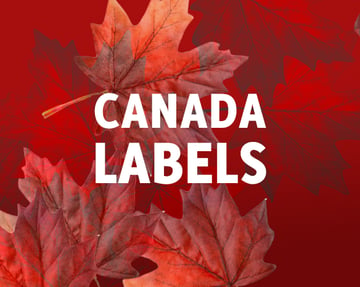The importance of food safety cannot be overstated in the current business climate. Every year there are roughly 48 million illnesses, 128,000 hospitalizations, and 3,000 deaths that are attributable to foodborne diseases.
The majority of these originate from bacteria, viruses, and pathogens that are consumed and then wreak their havoc on the body. Although a lot of factors contribute to the spread of foodborne illnesses, they can largely be traced to restaurants, food manufacturers and suppliers.
It’s up to these industry players to invest in quality incident tracking that will lower risk and keep customers safe and healthy. And that raises the question: Are you capturing and tracking all your non-conforming food products?
If your answer is “I don’t know,” that’s a pretty clear sign that something needs to change - and quickly. And if your answer is “yes” then how are you tracking these issues?
Understanding the Causes of Non-Conforming Food Products
Every business and industry has its own definition of what constitutes a non-conforming food product. In the food industry, it typically refers to one or more of the following:
- A virus, pathogen, or bacteria has contaminated the product. Sometimes it’s possible that the product has come into contact with a harmful chemical or physical hazard
- The food has reached its expiration date and is no longer fit to be consumed
- The finished product is underweight and doesn’t meet industry standards
- Quality attributes -- such as taste, smell, and feel -- don’t meet the requirements for product specification
It’s not usually difficult to recognize a non-conforming food product, but it’s not as easy to identify where and when a product might have transitioned from conforming to non-conforming. This contributes to poor capture rates for non-conforming products, which in turn feeds the blame game further down the supply chain.
Non-conforming ingredients can be passed along from a supplier, created in an assembly line, or occur as a result of being stored under improper conditions.
Proper Handling of Non-Conforming Food Products
The crucial point for both restaurants and food suppliers is to have a system in place for monitoring and handling non-conforming foods when they do appear. “By definition, nonconforming products result from verification, inspection or test activities. If these don’t exist at a particular stage of product realization, then nonconforming products don’t exist either,” explains Craig Cochran, project manager with the Center for International Standards & Quality.
“Organizations shouldn’t abuse this by claiming they’re not performing verification when they really are. Formal verification activities are very easily recognized by auditors. More important, an organization is playing the business version of Russian roulette when it tries to circumvent nonconforming product procedures for the sake of convenience.”
So what are some of the specific ways that businesses can properly handle non-conforming food products in order to keep their customers safe, avoid damaging their brand, and stay out of legal trouble? Here are some suggestions:
- Step 1: Check your non-conforming food product policy and procedures. Your organization should have well-documented procedures in place for when an incident with non-conforming product occurs - having a checklist to refer to when you’re facing an emergency makes addressing the issue faster and more accurate.
- Step 2: Review your procedures to see if they cover the following important information:
- What attributes makes a food product non-conforming? These are specific to your company’s unique product lines.
- How will non-conforming product be identified? What are the warning signs to watch out for?
- How will non-conforming product be stored? Where will it be stored during the course of the investigation?
- How will non-conforming product be disposed or destroyed? Once your investigation concludes, you’ll need a plan for disposing of the product in a safe manner.
- How is information regarding non-conforming food product captured, recorded and reported? Remember, documentation needs to be available for the authorities should they require it - paper files aren’t ideal.
- Who is responsible for taking action around non-conforming food product? Who in your company will be assigned to working through your procedures?
- Step 3: Physically inspect any non-conforming food product for adequate identification and storage. Once your procedures have been reviewed and refined in steps #1 and #2, you’ll be ready to physically inspect non-conforming food product when the need arises.
- Step 4: Take appropriate corrective action if your find inconsistencies with your procedures or physical conformance. Follow the guidelines you took the time to put in place in steps #1 and #2, and your corrective actions will take less time.
“Documents need to be kept concerning the quarantine of the non-conforming product, equipment used in making the product,” says Frank Gublo of Michigan State University Extension. “Records also need to be kept regarding the disposition of the product. This is necessary to mitigate risk and demonstrate that the processor has adequate measures in place to deal with manufacturing problems.”
FoodLogiQ Connect is Uniquely Suited for the Food Industry
How can you be sure you’re capturing all of your non-conforming food products? If you aren’t investing in non-conforming incident tracking, then you probably aren’t.
Achieving maximum visibility for the various quality issues you’re experiencing in your supply chain isn’t easy. It takes time, money, and a consistent commitment to staying on top of your supply chain.
If you try to do this manually, you’re likely to give up. There simply aren’t enough hours in the day to tackle a mission of this complexity without the help of powerful incident-management technology.
That’s why you need FoodLogiQ Connect, our proprietary platform that streamlines incident management and makes it easier to capture non-conforming food products earlier and more often. Here are some of the features:
- Superior visibility. Capture non-conforming food products anywhere across your supply chain and unpack the details regarding who, what, when, where, and why.
- Clear communication. Enjoy responsive communication like never before with the ability to post comments, status updates, and documentation directly into the platform.
- Streamlined credit requests. Have an issue? Credit requests can be sent directly to suppliers and distributors with no problems.
- Customized workflows. Not two businesses are the same, which is why there are tailored fields for incident types and requirements that apply to your individual supply chain.
- Simple dashboard view. There’s something incredibly powerful about being able to take a quick glance and understand what’s happening at any given moment.
- Powerful reporting. Data is king in today’s business world. Set and monitor benchmark performance to understand quality incidents and related issues.
Other posts you might be interested in
View All Posts
Product Formulation
10 min read
| September 14, 2023
A Milk Identity Crisis: Plant-Based “Milks” versus Dairy Milk, and the FDA’s Draft Guidance
Read More
Food Industry
8 min read
| October 18, 2022
2022 Food Product Recall Trends
Read More
Industry Regulations
40 min read
| March 15, 2021

